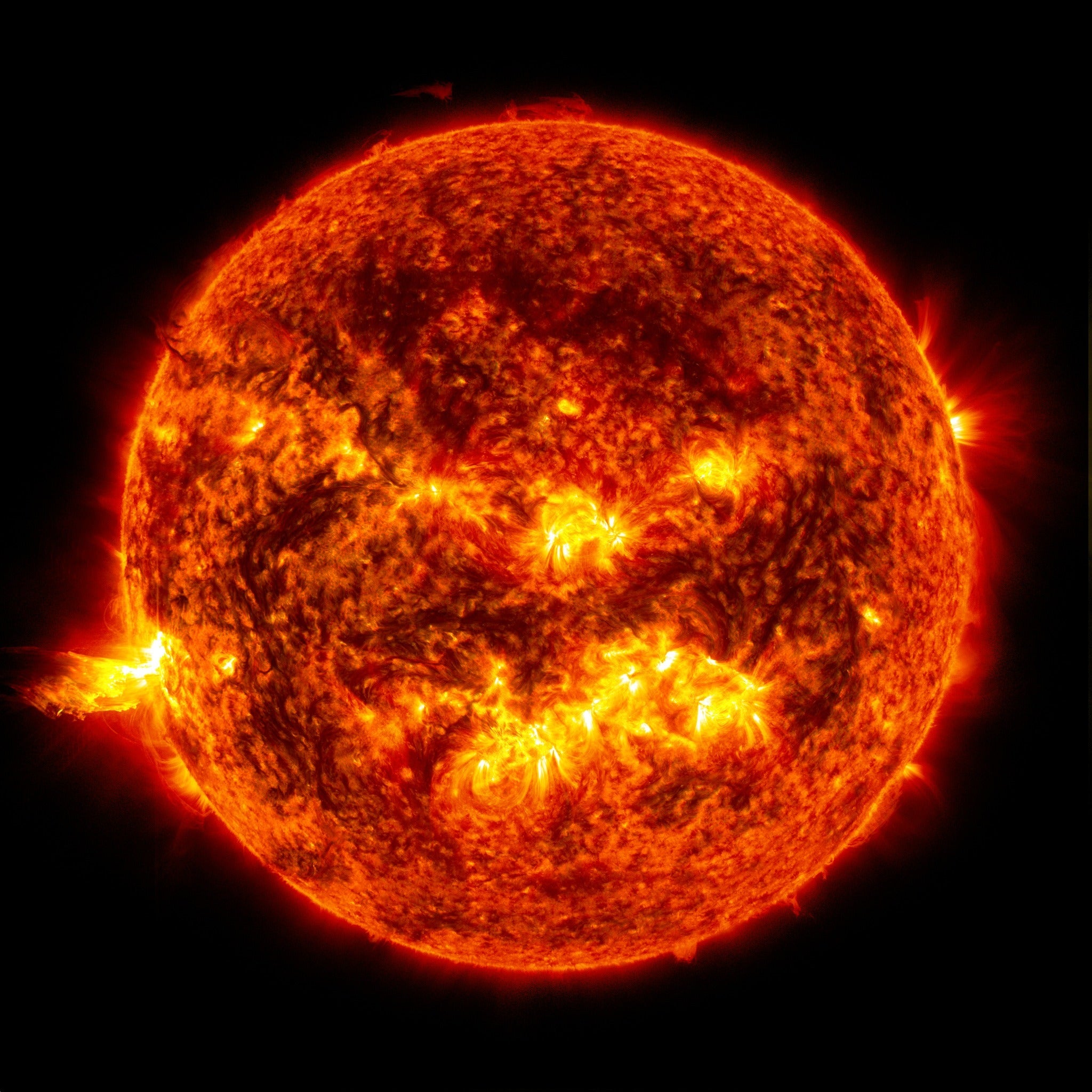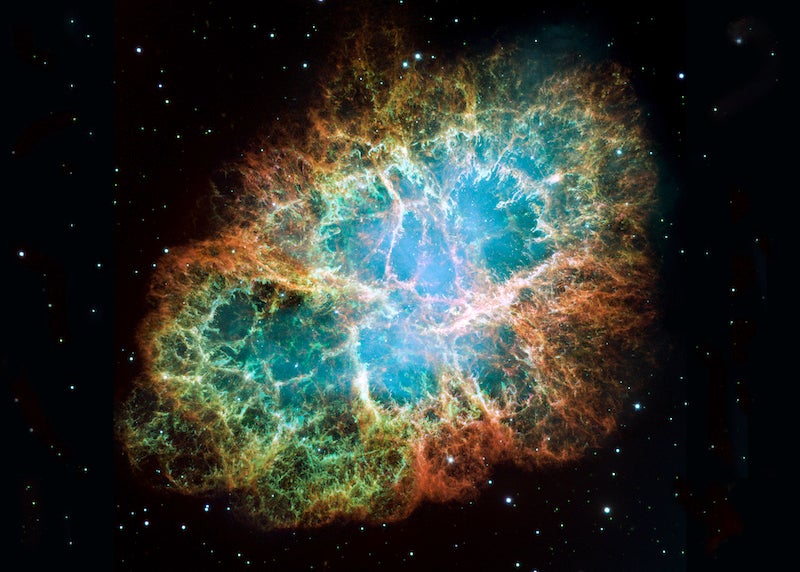The movie shown here picks up the story of one of these collapsing clouds when the universe was 155 million years old. The simulation, performed by astronomers Tom Abel of Pennsylvania State University, Greg Bryan of Oxford University, and Mike Norman of the University of Illinois, zooms in on a collapsing protostar that begins with about a million solar masses of material. At the end, a first-generation star with about 200 times the mass of the Sun is born.
These initial stars played a huge role in the evolution of the universe. They created the first significant amounts of elements heavier than helium and, when they blew up as supernovae, spread those heavy elements throughout the developing universe. This material was then incorporated into a second generation of smaller stars, which were much more similar to the Sun. Astronomers are searching the sky for examples of these second-generation stars.










